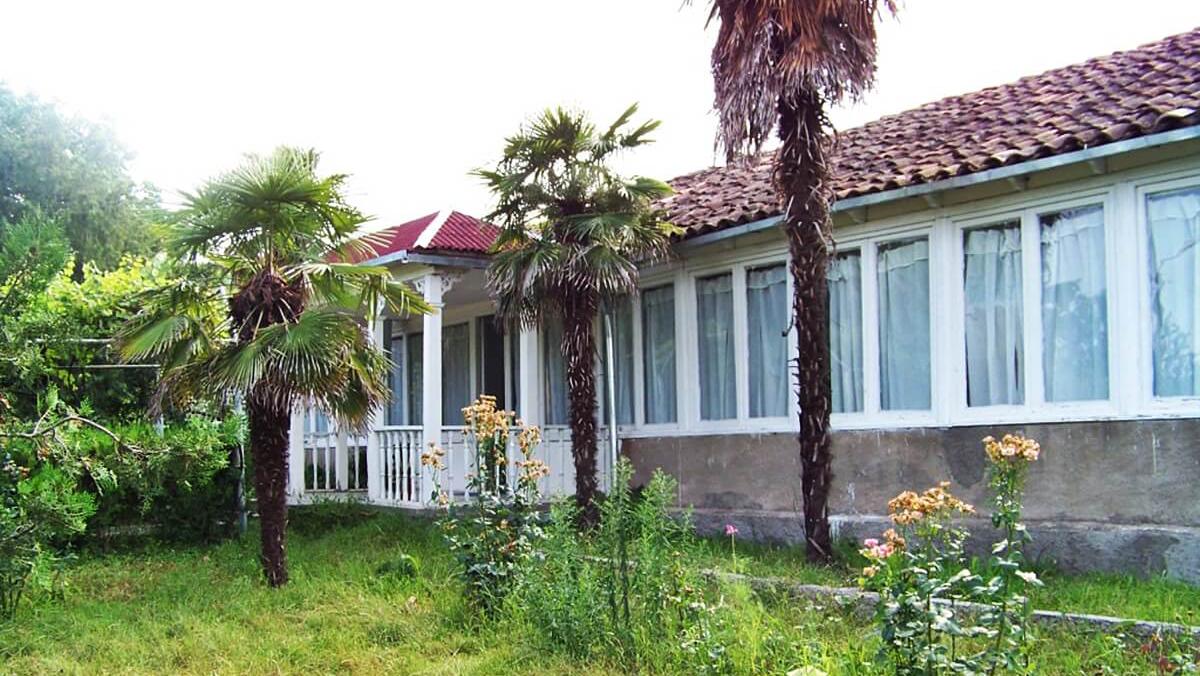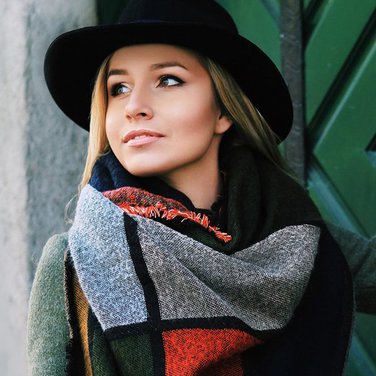
Small house-museums in Georgia. Rafael Eristavi House-Museum.
The Rafael Eristavi House-Museum is located in the living house of the poet's father. This museum contains rich exhibits: various publications, family photo albums, household items of the family, a desk, a trunk, paintings by various Georgian artists and much more.
Address: Akhmeta, Kistauri village
The museum is located in the poet's father's house, built at the end of the 18th century. The museum contains various materials related to the life and work of the Georgian poet, playwright, publicist Rafael Eristavi (1824-1901): publications from various periods, a unique photo album, memorial household items (a desk, harpsichord, carpets, a chest, dishes, paintings by Georgian classics, etc.).
R. Eristavi spent his childhood and the best years of his life in the village of Kistauri in Kakheti. Raphael's father gave his son to the abbot to be raised Shuamta Monastery Filadelfos Kiknadze. A year later, Filadelfos was arrested for participating in the conspiracy of 1832. In 1833, his parents took Rafael to Gori to study. From 1836, Rafael lived in Tbilisi, where he successfully graduated from high school in 1845. R. Eristavi was unable to continue his studies due to need, and in 1847 he began working as a translator, and Tush-Pshav-Khevsureti. In 1849, he was transferred to work in the office of the Main Directorate of Transcaucasia, where in 1851 he was appointed assistant to the head of the office.
In 1852, the young poet's first poems, "Instruction" and "Flower", were published, and he actively collaborated with the newspaper "Kavkaz". His reviews, ethnographic and historical letters were published on the pages of the newspaper.
Until the last years of his life, Rafael Eristavi continued his creative work. In the last years of his life, he worked on the libretto of the opera "Nugzari", which remained unfinished. In January 1901, Eristavi's health deteriorated, and a month later he died at the age of 77. From Telavi, the poet's remains were transported to the village of Kistauri. In 1911, Akaki Tsereteli visited Rafael Eristavi's grave in the village of Kistauri and organized a memorial service. In 1938, Rafael Eristavi's body was reburied in the yard Telavi Museum history and ethnography, and 50 years after his death (in 1951), the poet’s house-museum was opened.

House-Museum of Rafael Eristavi - is a unique place where you can get acquainted with the life and work of the outstanding Georgian poet, playwright and publicist Rafael Eristavi. The museum is located in the poet's father's house, built in the late 18th century, in the village of Kistauri, Kakheti region of Georgia. Here you can see various publications, a unique photo album, memorial household items, including a desk, harpsichord, carpets, a chest, dishes, paintings by classics of Georgia and other materials related to the life and work of the poet. Rafael Eristavi was born in 1824 in Kakheti, in the village of Kistauri. Rafael's father was a representative of a noble family, and his mother was the daughter of a poor nobleman. His parents instilled in Rafael a love of science, literature and art, and at a young age he began to show his talent and interest in poetry. In 1845, Rafael graduated from high school in Tbilisi and began working as a translator, and was then appointed assistant to the head of the office of the Main Directorate of Transcaucasia.
In 1852, Rafael published his first poems, which attracted attention to his talent. Soon he began to actively collaborate with the newspaper "Kavkaz", publishing his reviews, ethnographic and historical letters. In his works, Rafael Eristavi expressed his love for his native land, people and their history, and also reflected the social and political problems of his time.
Until the last days of his life, Rafael Eristavi continued his creative work. He worked on the libretto of the opera "Nugzari", which was not completed due to his death in 1901.
Rafael Eristavi left behind a huge legacy in the literature and culture of Georgia. He was one of the first Georgian writers who used the Georgian language to create works, and his contribution to the development of Georgian literature was enormous. His poetry promoted national ideals and love for the homeland.
Today, many institutions and organizations in Georgia bear the name of Rafael Eristavi. For example, the National Library of Georgia bears his name, and streets, schools and other public institutions throughout the country are named after Eristavi.
The Rafael Eristavi House Museum in the village of Kistauri has become one of the most popular places for tourists who want to get acquainted with the life and work of the writer. Here you can learn about his early life, see his personal belongings and household items, study his work and meet his family.
In addition, the Telavi Museum of History and Ethnography, where Rafael Eristavi's remains were reburied, features a larger collection of items related to the history and culture of Georgia. It houses valuable collections of ancient manuscripts, icons, jewelry, fabrics, and other items.
In addition, there are many other museums and galleries throughout Georgia dedicated to the country's history and culture, where you can learn more about Georgia's rich and multifaceted culture. One such museum is the Shalva Amonashvili State Museum of Fine Arts in Tbilisi, which is the largest art gallery in Georgia. It features a variety of exhibits, including painting, sculpture, graphics, and applied art.
The Rafael Eristavi House Museum is not only a place where you can get acquainted with the rich history and work of the outstanding Georgian poet, but also where you can experience the spirit and culture of life in Georgia in the 19th-20th centuries. In addition, the museum provides an opportunity to immerse yourself in the atmosphere of a Georgian home of that time, see rare and interesting household items and art of that era, and enjoy the beauty of the paintings of Georgian artists.
It is interesting to note that Rafael Eristavi is not only a famous writer, but also a connoisseur of music. He had a deep knowledge of musical theory and art and wrote music for his works. His poems were often used in songs, and his dramas were often staged with live music.
In addition, Rafael Eristavi was one of the first Georgian journalists and publicists. He collaborated with many famous newspapers of his time and actively wrote social and political articles. His work reflects the themes of freedom and national identity, which were especially relevant during the era of Georgia's struggle for independence.
It is interesting to note that the life and work of Rafael Eristavi inspired many modern Georgian writers and poets. His poetic language, style and themes remain relevant today, influencing modern Georgian literature and art.
Thus, the Rafael Eristavi House Museum is not only a monument of Georgian culture and art, but also a place where you can get acquainted with the history and culture of this country, immerse yourself in the atmosphere of life in a Georgian house of the 19th-20th centuries and enjoy the beauty of works of art created not only by Rafael Eristavi, but also by other talented artists.
In the Rafael Eristavi House Museum, visitors can see the works of Rafael Eristavi himself, his brother Nikoloz, as well as other artists who worked in the same period. Here you will see beautiful portraits, landscapes, still lifes and other works of art that allow you to feel the spirit of that time and place.
In addition, the house museum offers excursions where you will learn about the history of the house, the life of Rafael Eristavi and his family, the traditions and customs of Georgian culture of that time. In general, visiting the Rafael Eristavi House Museum is not only an opportunity to enjoy the beauty of works of art, but also to learn more about Georgia and its culture. This is a place that will leave you with vivid impressions and give you the opportunity to immerse yourself in the atmosphere of life in a Georgian home of the 19th-20th centuries.
--------------------------
We invite you to leave comments and ask questions under our articles. Your opinions and ideas are important to us, and we will be happy to discuss them with you.







30 comments
Log in to leave a comment
Было бы интересно посмотреть на предметы принадлежащие ему: фотоальбом, письменный рабочий стол, различные принадлежности.
Им была создана поэтическая школа, о таких людях можно писать много...
Пятидесятилетие литературной деятельности Эристави отмечалось торжественно в Тбилиси в 1895 г. и стало признанием для всей Грузии.
В Доме- музее грузинского поэта представлены его произведения, старинная мебель, картины и т.д., что при посещении музея дает нам возможность окунуться в жизнь поэта. Я бы посоветовала, музей Эристави для посещения и время припровождения на отдыхе.